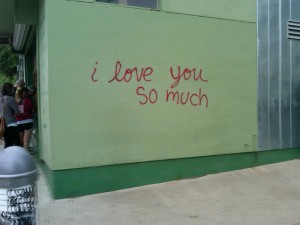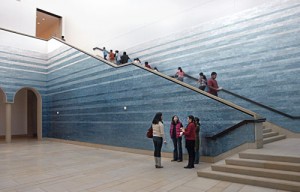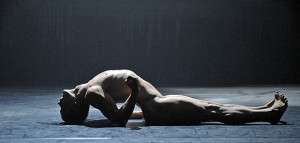When I lived in Boston, I met and worked with many press agents. I remember one of them saying once, “you know, there’s good news and there’s bad news. And then, there is some f*cking serious news.†Â
I know she would agree when I say the past few weeks have been filled with way too much of that serious news. As an arts writer, I froze in the midst of it. Somewhere in between the Boston marathon bombings, the fertilizer plant explosion in the small Texas town of West, the Bangladesh factory collapse, the Guantánamo Bay detention camp hunger strike, and the dismal fate of gun control in America (to mention only a few recent and disturbing events), I was writing a column about the merits of Austin as an arts destination.
It was going so well, and then very simply, I couldn’t continue. Even right at this moment, as I’m attempting to get back to my inspiration,  I hear that a deranged man just died of an apparent self-inflicted gunshot wound inside Terminal B at the Houston Intercontinental airport, after firing his rifle into the ceiling. As if that’s not bad enough, a colleague reminds me that the NRA annual convention is in Houston this weekend. Promotional materials say there will be ” fun-filled special events” and to “bring the whole family-there will be something for everyone!” I am certain there is nothing for me at the convention except despair, despite the fact that “every major firearm company in the country” will be there. Bring the whole family? If I had children, I wouldn’t want them anywhere near a gun convention.
It’s difficult to determine exactly why writers go dry. Weighed against the overwhelming reports of so much suffering, recounting my recent fairy-tale trip to what is possibly the most appealing city in Texas seemed trifling. I didn’t feel that I could concentrate properly on the nuances of a huge exhibition at The Blanton art museum, or the progress of form and content in Meryl Tankard’s brilliant choreography, The Oracle (presented by Texas Performing Arts at Bass Concert Hall) when all this unrelenting and depressing news was happening. I pressed on, anyway, and decided to stay away from television, in particular, CNN, over the next few weeks.  Â

I love Austin, and it’s no secret that the city is also beloved by many people far beyond the borders of Texas. I was reminded of this in January, when I spent five days at a Buddhist retreat in the snowy hills of Woodstock, New York. At dinner on the first night, I met a fledgling hipster from Brooklyn. She grimaced when I told her that I lived in Houston, and didn’t waste any time explaining to everyone else at the table that Texas is a stupid, awful state filled with gun-toting bigots. She did have a point, even if she’d never lived in Texas, so I let her continue without saying a thing.
“It’s horrible,†she persisted, until another woman reminded her that at least Austin has some redeemable qualities. “Oh, if we could keep Austin and just get rid of the rest of the state, that would be wonderful!†she lamented. Everyone broke into laughter, as if I wasn’t even there, so I got up and went, wearily, to clean my dishes. “They have Buddha nature, nonetheless,” I kept reminding myself as I scoured. Of course, getting rid of Dallas would mean losing a wonderful and supportive Buddhist sangha presided over by Lama Dudjom Dorje, not to mention the thousands of Buddhists here in Houston. Not everyone in the state is a cheap imitation of our lamentable governor, Rick Perry, and I keep reminding myself that even he has some Buddha nature buried within.   Â
Not everyone, though, is feeling the love of Austin, either. Irreverent writer David Landsel described it as the number one “terribly overrated destination,†in his recent column for The Huffington Post. He suggests my hometown of Houston as the more viable alternative, even if “it’s so ugly you might want to put a bag over its head.â€
I find Austin is much, much prettier than either Houston or Dallas. Part of the appeal has to do with the lushness of the landscape and the hilly terrain. There is a faded elegance that fits in well with the current craze for faded elegance. On a Saturday afternoon, though, far too many tourists stroll along South Congress avenue, making window shopping or food-truck dining a mostly crowded and exhausting experience. After a quick coffee at Jo’s on Saturday morning, I headed for a more quiet, spacious and contemplative environment.

I have a close friend, Charlene, in Austin. She hasn’t been to see the current exhibit at Blanton Museum of Art on the University of Texas Austin campus, citing the “tacky†Monet water lilies used to promote it as the possible foreshadowing of a predictable and perhaps bourgeois show. I spent two hours looking at the current exhibition, Through The Eyes of Texas, in the Blanton’s roomy galleries and I found it thrilling. The premise is unusual – to gather a wide range of work together with only one common denominator: all of it comes from private collections of University of Texas alumnae.

On display in the museum’s first floor atrium and stairway is a stunningly sophisticated and soothing work, Teresita Fernández’s 2009 Stacked Waters, made from 3,100 square feet of custom-cast acrylic. The gallery label calls it “a nod to Judd’s exploration of the interior of a box.” Up close, the tiles remind me of the exterior of my mother’s accordion. The piece is cleverly installed surrounding the staircase, which allows the viewer to move up and down through the graduated, transmuting pigments. Sensual and eveloping, it’s a work I could live with for a very long time.
Charlene’s suspicion of the Monet water lillies, once I’d seen most all of Through the Eyes of Texas, seemed warranted. The vast collection gathered here spans the full range of art history, though it appears that at least half of it is focused on modernism and more recent contemporary art. Joel-Peter Witkin’s photograph, Three Kinds of Women, Mexico City (a stunning study after Seurat’s Poseuses) probably wouldn’t bring in the crowds like the Monet could, but there weren’t crowds in the gallery anyway.
Some of these alumnae/collectors are well-established artists themselves, such as Robert Wilson, whose Watermill Center Collection has lent Tania Bruguera’s Overalls (c. 2006-7) made from wood and monofilament. I don’t think Wilson actually took a degree from University of Texas, but that’s another matter, I suppose.
There are costume designs from Bakst and Gontcharova for the Ballets Russes, Noguchi’s Hérodiade: Mirror (Torso) in bronze (designed for Martha Graham), and magnificently eccentric pieces like Petah Coyne’s Untitled (Daphne) from 2002-3, an imposing tree stump covered in what look like black dahlias.  I stooped to pick up a green hard candy from Feliz Gonzales-Torres’ Untitled (L.A.) 1991, and sucked on it while sitting quietly next to Jenny Holzer’s honey-onyx sarcophagus and LED sign, Laments: I can make women’s breasts weep…”
One idea to take from the exhibition is that a number of University of Texas alumnae have both money and extremely good taste. I was happy to see so much contemporary work gathered under this rubric. Of course, the Monet was there at the end of the show, next to some classics like Henri Rousseau’s 1907 Exotic Landscape with Tiger and Hunters, but it is the surprising, less-familiar pieces that make this exhibition so rewarding.

More modernity that night: Charlene and I went to the enormous University of Texas Bass Hall to see Meryl Tankard and Paul White’s stunning solo version of Le Sacre du printemps, titled The Oracle and starring Australian dancer Paul White.  I never cease to be amazed how easily Stravinsky’s score can be inhabited by a soloist. In fact, every solo I’ve seen (Tero Saarinen’s The Hunt, Molissa Fenley’s State of Darkness, among others) requires such a significant commitment that an unsustainable choreographic strategy doesn’t ever seem possible. If you take it on, you make sure you’re doing something people want to watch for at least 40 minutes.  Charlene worried that Régis Lansac’s video work, especially in the lengthy opening segment, might be “tapping into some atavistic freakishness,” as she put it, and she could be correct. They are just a bit too long, as if they are the reason the piece is converted into an “evening-length” performance. Inspired by images from Scandinavian artist Odd Nerdrum, for me they recalled Bergman’s Seventh Seal, possibly from the brilliant black-and-whiteness. Dancer and co-choreographer White is distractingly beautiful, appearing in a series of vigorous, technical episodes in highly archetypal costumes: a cloak, a loincloth, etc.
At the Q&A following the performance, he returned to the stage wearing a pair of cowboy boots, jeans and a T-shirt, and a cowboy hat. He gestured to the hat and boots as if he’d been shopping for them on South Congress Avenue just that afternoon.  That’s right, you’re not from Austin, but Austin wants you anyway (to paraphrase Lyle Lovett’s ever-popular song).


